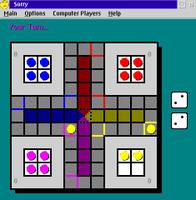
The indicators were wrong this month – the last day of September turned out to be very busy here at the registry. We recorded 712 documents, a significant increase from the 601 that were recorded on the last day of August. This afternoon, it was difficult to move around the record hall since so many of the tables were being used for closings. So it was a long day, but before the weekend starts, I want to put in a plug for Google Earth, a free GIS program from, you guessed it, Google. Here’s the link that you have to follow to download the program - http://earth.google.com/ - unlike most other Google features, Google Earth requires you to download and install software on your computer. But it’s easy and unobtrusive and, for the standard version, free. Once you’ve installed the program, you are confronted with a picture of the earth on one side of the screen and some data windows on the other. All you do is enter the address you’re interested in – say “360 Gorham Street, Lowell, Massachusetts” for the registry of deeds – and then click the appropriate button and, like some high tech ride at Disney World, you zoom into that particular spot on the earth, viewing the roof of the building from above courtesy of an overhead photograph. It’s a terrific way to do a computerized “route reconnaissance” when you’re about to drive somewhere new, but it’s also a glimpse into the future of registries of deeds. We have been exploring ways of linking our records with the overhead imagery of Mass GIS (which is the provider of overhead pictures to Google for this part of the globe). In the not too distant future, you’ll be able to click on one of our records and have the overhead photo display in a new window. The process will also work the other way. While you’re waiting, try out Google Earth.










